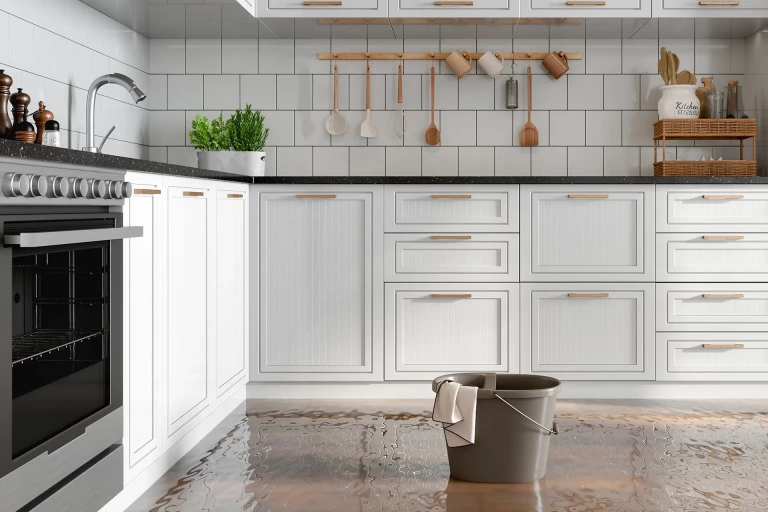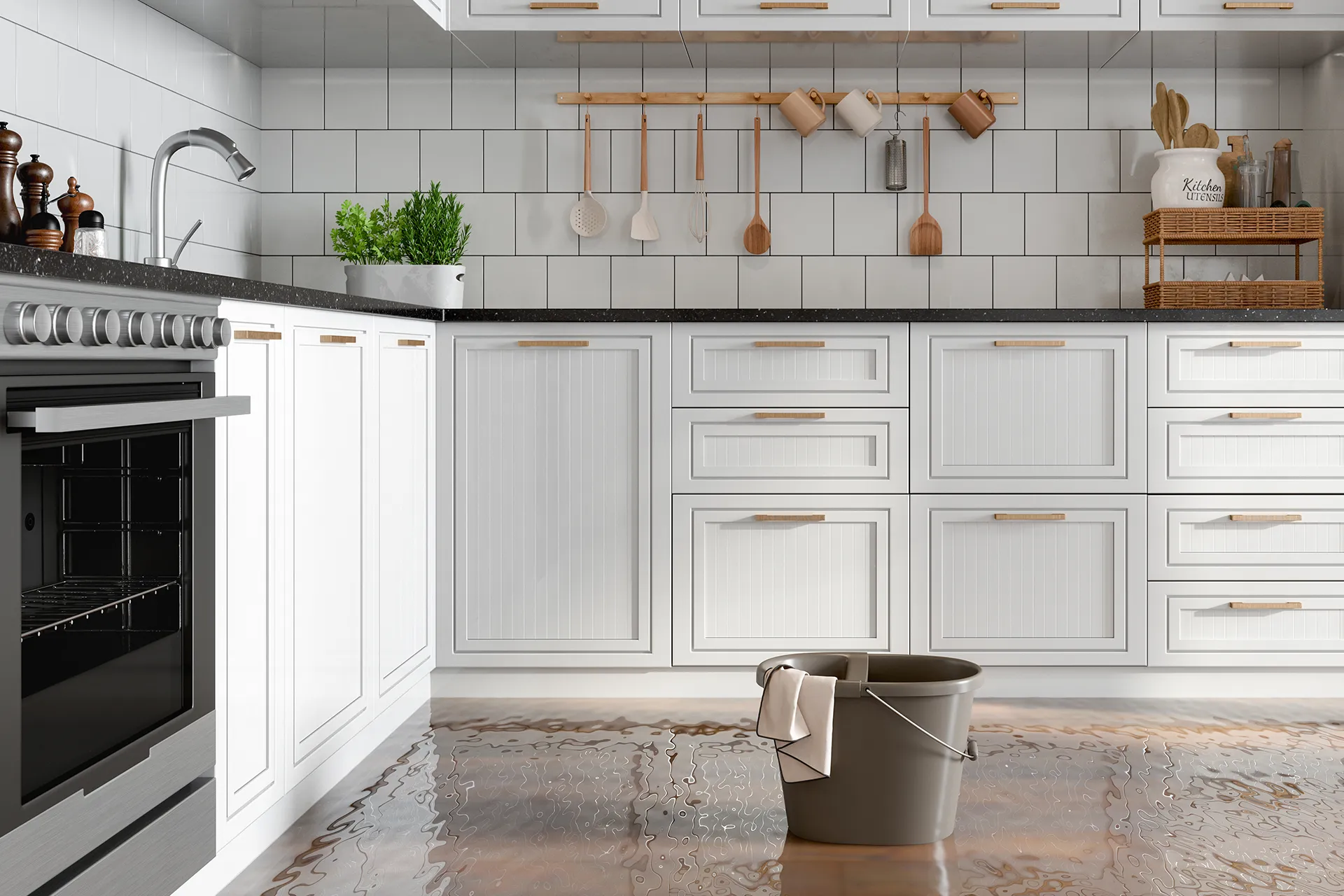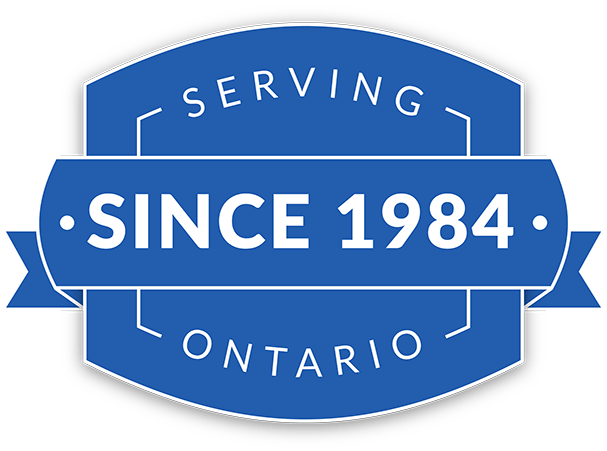
12 Ways to Protect Against Flood Damage in Ontario
Ontario homeowners face growing flood risks from spring thaws, heavy rain, and severe storms. Yes, there are ways to protect your home: sealing foundations, installing...

Ontario homeowners face growing flood risks from spring thaws, heavy rain, and severe storms. Yes, there are ways to protect your home: sealing foundations, installing sump pumps, maintaining gutters, and reviewing your insurance are just a few. With flooding now one of the most costly natural disasters in Canada, proactive prevention and the right insurance coverage are essential for protecting your home and financial security.
According to the Government of Canada, extreme rainfall events are becoming more frequent and more intense. Warmer air holds more moisture, leading to sudden downpours that overwhelm storm drains and rivers. What used to be “once-in-a-century” storms now occur every decade.
Ontario’s geography makes it vulnerable: spring snowmelt swells rivers, the Great Lakes have fluctuating water levels, and urban areas like Toronto face flash flooding from overwhelmed stormwater systems. Communities near Lake Ontario, Lake Erie, and river valleys such as the Ottawa River are particularly exposed.
Flooding is Canada’s most expensive natural disaster, with the Insurance Bureau of Canada (IBC) reporting billions in damages annually. For homeowners, even a few inches of water in the basement can cause $20,000–$40,000 in damage — costs not always covered under standard home insurance.
Traditional home insurance covers sudden and accidental water damage — like a burst pipe — but not overland flooding. That means water entering your home from rivers, lakes, or heavy rainfall is usually excluded unless you add specific coverage.
Most insurers now offer optional overland flood coverage, which protects against water entering from outside sources, and sewer backup coverage, which addresses damage from overwhelmed municipal drains. Both are vital in Ontario, where heavy rains and older infrastructure increase risk.
With climate change driving more frequent extreme weather, insurers are tightening their underwriting. In high-risk zones, flood coverage can be harder to secure or more expensive. Securing coverage before your area is reclassified as high-risk can lock in access at more manageable rates.
Even the smallest crack in your foundation or basement wall can become a direct pathway for water intrusion during heavy rains or rapid snowmelt. Left unchecked, seepage can lead to mould, structural damage, and costly repairs. Professional sealing with epoxy or polyurethane foam is one of the most effective long-term defences. These materials expand and bond with concrete, forming a watertight barrier. Don’t forget to inspect your basement regularly — new cracks can form as your home naturally shifts and settles.
A sump pump is your first line of defence against basement flooding, automatically removing water that collects in a sump pit before it rises to dangerous levels. When choosing a system, look for a pump with a battery backup or a water-powered backup system. This is critical because storms that bring heavy rain often cause power outages — exactly when you need the pump most. Test your sump pump annually and clean the pit to ensure it functions when disaster strikes.
Sewer backups are among the most destructive and unpleasant types of flood damage. Installing a backwater valve (or backflow prevention valve) on your home’s main sewer line prevents municipal sewer water from flowing backward into your home during heavy rainfall. While installation costs a fraction of the cleanup bill from raw sewage contamination, many municipalities also offer subsidies to encourage homeowners to install them. If you already have one, remember to inspect and maintain it to ensure it
The slope of your yard is a key factor in keeping water out of your foundation. If the soil around your home has settled and now slopes inward, rainwater will pool directly against your walls, increasing the chance of seepage. Regrading involves adding soil to create a gentle slope away from the house, ideally directing water at least six feet from the foundation. Checking the grading annually — and after major landscaping projects — helps maintain this crucial drainage barrier.
Your roof collects thousands of litres of rainwater annually, and gutters are meant to channel that water safely away from your home. When clogged with leaves or debris, gutters overflow, sending water down exterior walls and straight toward the foundation. Cleaning them twice a year — once in spring and once in fall — keeps water moving efficiently. Adding gutter guards or leaf screens can further reduce maintenance needs while extending the life of your system.
Even clean gutters are ineffective if downspouts dump water directly at your foundation. Adding extensions or splash blocks carries water two to three metres away, significantly reducing the risk of basement seepage. Flexible downspout extenders are inexpensive, easy to install, and can be adjusted seasonally depending on yard conditions. Always ensure extensions don’t direct water toward a neighbour’s property or public sidewalks, which can create new hazards.
Basement windows, window wells, and below-grade stairwells are natural collection points for rainwater. Without protection, they quickly become entryways for water during storms. Clear existing drains regularly and install covers over window wells to block direct rainfall. For basement walkouts or stairwells, trench drains at the base can redirect water away from the entry point. These small measures can prevent large amounts of water from entering vulnerable areas.
Basements often house critical systems like furnaces, water heaters, and electrical panels — all of which are highly vulnerable to water damage. Raising these appliances on platforms or relocating them to higher floors can prevent thousands of dollars in losses and reduce downtime after a flood. For electrical systems, consider moving outlets higher up on basement walls to reduce shock hazards and costly rewiring after even a small flood.
If you choose to finish your basement, the materials you select can make the difference between minor cleanup and complete renovation after a flood. Flooring such as ceramic tile, polished concrete, or waterproof vinyl resists water damage far better than carpet or hardwood. Closed-cell foam insulation withstands moisture better than fibreglass batts, and mould-resistant drywall provides extra protection. Even details like installing baseboards with a gap above the floor can reduce water damage in a minor flood.
Basements are convenient storage spaces, but they’re also the most at risk in a flood. Important documents, electronics, family heirlooms, and expensive equipment should never sit directly on the floor. Use sturdy shelving to elevate plastic storage bins or consider relocating irreplaceable items to the main or upper floors. A fire- and waterproof safe can protect small valuables like passports or digital backups from both fire and flood.
Preparation can reduce both damage and stress when flooding occurs. Ensure every family member knows how to shut off water, electricity, and gas in an emergency. Keep an emergency kit stocked with flashlights, batteries, bottled water, non-perishable food, and first-aid supplies. Having an action plan that includes evacuation routes, communication methods, and local emergency numbers makes responding to a flood faster and safer for everyone in the household.
Even the most thorough prevention plan can’t eliminate flood risk. Standard homeowner’s insurance in Ontario doesn’t automatically cover overland flooding, and sewer backup coverage must often be purchased as an endorsement. Reviewing your policy annually with a broker ensures you understand what’s covered — and what isn’t. As extreme weather becomes more common, carrying the right coverage could be the difference between recovery and financial ruin.
Not all insurers assess flood risk the same way. Some may weigh proximity to rivers or municipal infrastructure heavily, while others focus more on past claims history. A broker can compare rates and coverage options across multiple providers.
Insurers use flood maps, municipal drainage records, and climate models to price coverage. If your home is in a designated flood plain, coverage may be limited — making prevention measures like sump pumps and backwater valves even more important.
Flood coverage can be confusing. A broker ensures you’re not left exposed by exclusions and helps you bundle flood protection with your home policy for the best rate.
Flooding is one of the fastest-growing risks for Ontario homeowners. Regal Insurance brokers can help you secure the right flood coverage, compare options from Canada’s top insurers, and protect your home and finances against severe weather. Get a free home insurance quote today and safeguard your biggest investment from flood damage.

Ontario homeowners face growing flood risks from spring thaws, heavy rain, and severe storms. Yes, there are ways to protect your home: sealing foundations, installing...

Buying a home is one of the most significant milestones of your life, and it comes with a flood of deadlines, decisions, and paperwork. In...

Protecting Your Multi-Generational Home: What You Need to Know Ontario’s multi-generational homes are becoming increasingly popular, with families choosing to live together to support aging...

No obligation, just great information!
